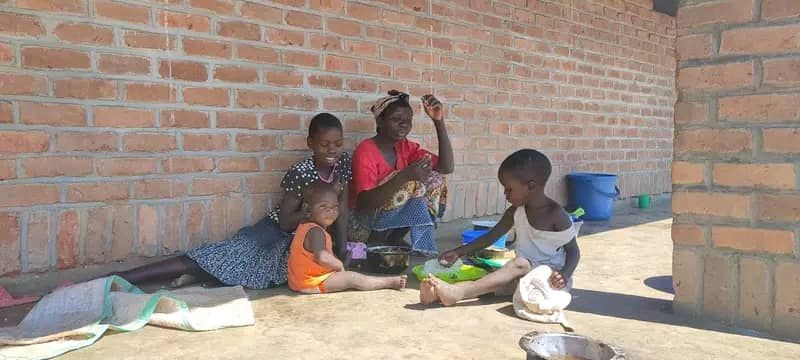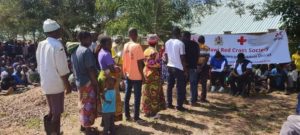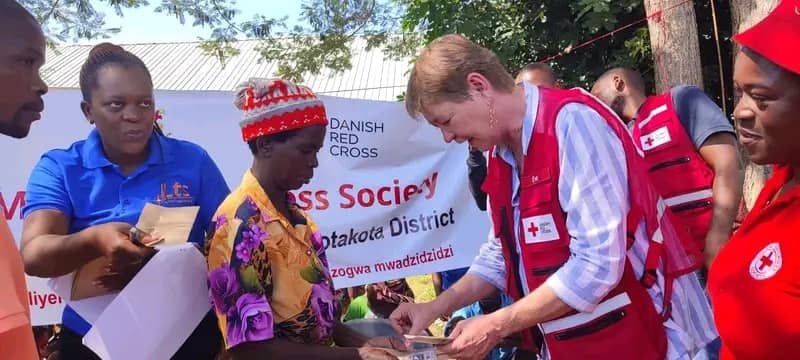By Burnett Munthali
International Federation of Red Cross (IFRC) and Danish Red Cross have through Malawi Red Cross Society made a distribution of K214 million to over 500 families affected by floods in Nkhotakota.
Each affected family from Matiki, Ngala, Nyamvu camps under Senior Chief Kanyenda in the lakeshore district has pocketed K100, 000.
Danish Red Cross Country Manager Malawi, representing all Red Cross partners, Eva Jordung Nicolson said the support will enable the flood survivors to go back to their homes and start rebuilding their lives.

Jordung added that looking at the extent of damages caused by last February’s floods, Red Cross partners will still be mobilizing resources for continued support to flood survivors.
Director of Housing in the Ministry of Lands, Martin Chimangeni said such support will help flood survivors to construct dwelling places and desert the camps.
The floods claimed 8 lives and affected over 14, 000 people in the district.
Flooding typically occurs when prolonged rain falls over several days, when intense rain falls over a short period of time, or when an ice or debris jam causes a river or stream to overflow onto the surrounding area. Flooding can also result from the failure of a water control structure, such as a levee or dam.
As floodwaters spread they can threaten lives, inundate properties and businesses, destroy belongings, damage vital infrastructure and prevent access to essential public services. Often the effects of flood are long term and can be very costly, disruptive and distressing for communities involved. The most immediate threat of floods is to people who are caught on foot or travelling in vehicles in affected areas. People are at risk of sustaining serious or fatal injuries from floodwater, especially swift moving water, and it is important never to enter flood waters on foot or attempt to drive on flooded roads.
The challenges faced by flood-affected households include inaccessibility to basic facilities, high transportation costs, weak social ties, lack of trust among household members, loss of privacy, and increased vulnerability for women and children.
Commonly available flood-resistant materials include concrete, closed-cell and foam insulation, pressure-treated and marine-grade plywood, and ceramic tile. And keep in mind that all hardware used in these areas should be made of stainless or galvanized steel.
Flood resistant buildings are typically constructed using concrete or steel and concrete but may also be made with masonry provided there is an impervious layer, such as water-resistant render or asphalt.





